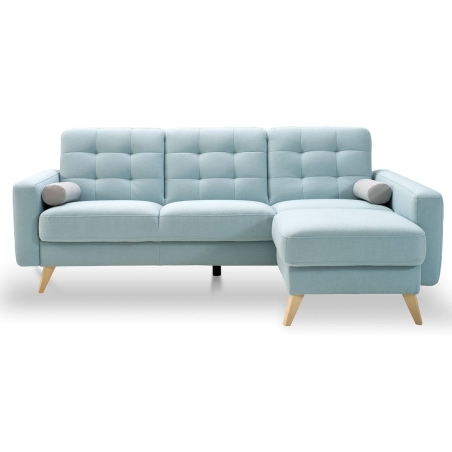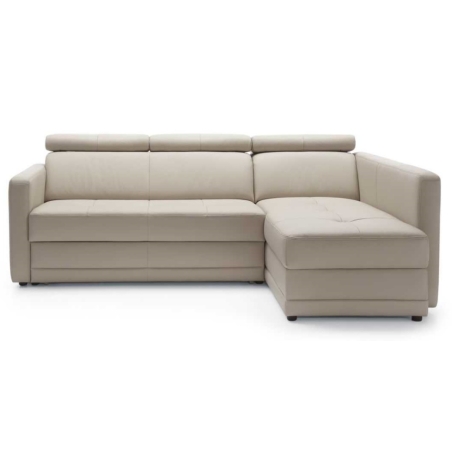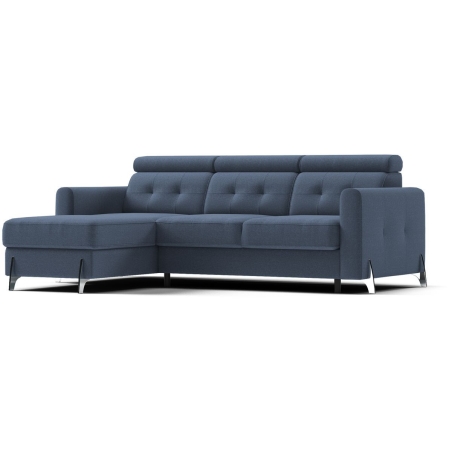- Discount

Wid: 222.00, Dep: 173.00, Hgt: 87.00.
Nappa Sweet Sit sofa
- Ability to bring in
- Available lewo / biased














Do you already have your dream corner sofa in the living room? Or perhaps you’re just planning to buy one and wondering how to take proper care of it?
Remember two important things. First: regularity is key. It’s better to clean the sofa every few days for a few minutes than to spend many hours doing it once every several years. Second: make sure that the cleaning products you choose, as well as the maintenance method, are well suited to the construction and mechanism of your sofa. This way, your furniture will serve you not only for a long time but also truly well.
In the article below, we’ve prepared a practical cleaning and maintenance guide for your furniture. Check out our tips to keep your sofa looking stunning! Enjoy reading.
Why is regular maintenance of upholstered furniture so important?
Systematic care for your corner sofa or couch is crucial both for its attractive appearance and longevity. After all, you certainly don’t want to replace your favorite sofa after just a year or two of use.
Unfortunately, neglected upholstery wears out much faster and loses color. That’s not all — lack of care also leads to excessive buildup of dust, dirt, and allergens, which can make daily use uncomfortable rather than pleasant.
With regular maintenance, you can:
Prevent fabric fading — vacuuming and cleaning regularly protects colors from fading.
Reduce stains and dirt — reacting quickly helps you avoid stubborn stains.
Maintain comfort — clean upholstery is pleasant to the touch and safe for the skin.
Extend the furniture’s lifespan — proper care protects the sofa’s structure and mechanisms.
Yes, regular short cleaning sessions are an investment that pays off in the form of beautiful and durable furniture for many years.
How to protect your furniture from damage on a daily basis?
It’s no surprise that everyday use leads to upholstery wear, seat deformation, and fabric fading. Can you prevent it? Nothing will make your sofa last forever, but there are definitely ways to keep it in excellent condition for many years.
Proper placement of furniture in the living room
Did you know that the location of your sofa has a huge impact on its durability? If you have the space, make sure it’s not placed in direct sunlight, as UV rays cause fabric to fade.
It’s also best to avoid placing the sofa right next to a radiator, as heat can deform and dry out the upholstery. It’s equally important to maintain easy access around the sofa — this makes daily cleaning easier and prevents dirt from accumulating in hard-to-reach places.
How to prevent fading and deformation?
The comfort of using a sofa largely depends on the proper shape of the seats, and the intensity of the fabric’s color is equally important for aesthetics. You can minimize fading and deformation by ensuring even weight distribution and regular fabric care.
If your sofa model allows, rotate cushions and seats so the pressure on the fabric and springs is evenly distributed. Also pay attention to the room’s temperature and humidity — both excessive humidity and high temperature can cause visible deformation.
How to care for your sofa every day?
Do you skip daily maintenance because you’re afraid it will take too long? There’s no need — it doesn’t have to be time-consuming at all.
Just a few simple habits done “along the way” will help keep your sofa fresh, clean, and prevent dirt from penetrating deep into the fabric.
Quick vacuuming
The easiest way to keep your sofa in good condition is to vacuum it regularly — ideally with a soft-bristle attachment so the fabric doesn’t pill and dust is thoroughly removed. Spend a few minutes every 2–3 days. Set the vacuum to low suction to avoid stretching or weakening the fabric weave.
Removing dust and crumbs from hard-to-reach areas
Eating on the sofa from time to time is completely normal— but crumbs tend to end up between cushions and seats. Dust and hair accumulate there as well.
To prevent buildup, once a week move the cushions and vacuum these spaces using a narrow attachment.
If your sofa has tight gaps that are difficult to reach, use a simple trick: wrap a dry microfiber cloth around a ruler. This will help you reach places your hand or vacuum attachment cannot.
How to remove the most common stains from a sofa?
Even with regular care, an occasional stain may appear. Don’t worry — if you react quickly and properly, you can restore your sofa’s appearance. Most stains can be removed without a trace.
Food and drink stains
If the stain is fresh, blot it gently with a dry towel or microfiber cloth. Be careful not to rub it deeper into the fabric. Then clean it with lukewarm water mixed with a bit of mild soap or gentle detergent.
Grease stains
For greasy marks, dish soap works great thanks to its degreasing properties. Mix a small amount with warm water and gently wipe the stain with a soft cloth.
Pet hair and dirt
Does your dog or cat love relaxing on the sofa? To remove fur, put on a rubber glove, lightly dampen it, and run your hand over the upholstery. The hair will cling to the rubber.
If you notice muddy paw prints or dried dirt, start by wiping the area with a damp microfiber cloth.
Home remedies for sofa cleaning
Before choosing professional cleaning products, you can try effective home methods — they are quick, simple, and usually you have everything you need at home.
Safe products for quick reactions
Baking soda and vinegar are among the best at-home cleaning solutions. Mixed with water, they effectively remove stains and eliminate unpleasant odors.
Baking soda also lifts fabric fibers slightly, making the material look neater after cleaning.
Substances to avoid
While home remedies are great, you must match them to the fabric type. Avoid strong bleaching powders and alcohol-based products — they may weaken or discolor the upholstery.
Which professional cleaning products should you choose?
When home methods aren’t enough or you want a deeper clean, reach for professional products. They are stronger and better at removing stubborn stains — just make sure to choose a product suitable for your specific upholstery.
Recommended products for different upholstery types:
Velvet / velour — responds best to light foam that doesn’t soak the fibers; brushing afterward helps restore even texture.
Bouclé — use delicate water-based products or light foams that don’t get trapped between loops.
Woven fabrics — tolerate most upholstery cleaners but choose ones that don’t leave a hard residue.
Easy-clean fabrics with protective coating — require minimal cleaning product; light mists or foams are safest.
Microfiber and smooth textiles — respond well to mild soapy solutions; brushing afterward restores fiber alignment.
Useful brushes, cloths, and accessories
In addition to cleaning agents, equip your home with simple accessories that make sofa cleaning much easier: a soft upholstery brush, microfiber cloths, a narrow vacuum attachment, and a small soft-bristle brush for cleaning gaps between cushions.
Impregnation — a key step for long-lasting furniture
One of the best ways to protect your sofa from stains is fabric impregnation. Regular use of protective sprays keeps the fabric looking good, maintaining its natural color, softness, and freshness.
Always apply impregnation on clean, dry upholstery and follow the manufacturer’s instructions. A protective barrier helps prevent stains from penetrating deeply and reduces the risk of discoloration.
How to care for a sofa bed with storage?
A sofa bed with a bedding compartment is extremely practical, but requires proper care so its mechanism works flawlessly for years.
Keeping internal components clean
Regularly check and clean the folding mechanism and bedding compartment. Light vacuuming and wiping with a damp cloth is usually enough to maintain good condition and spot any loose elements early.
Caring for the mattress and folding mechanism
The mattress needs regular airing — even if you don’t use the sleeping function often. A few minutes with the sofa unfolded helps remove moisture and prevent unpleasant odors. If possible, flip the mattress to ensure even wear.
Always operate the mechanism gently — avoid pulling or using excessive force. If the manufacturer recommends lubrication, remember to do it.
When to order professional upholstery cleaning?
If everyday maintenance is no longer enough — for example, you notice persistent stains, unpleasant smells, or the fabric simply looks dull — professional upholstery cleaning may be necessary.
Professional cleaning not only refreshes the appearance but also removes deeply embedded dust and allergens, extending the fabric’s lifespan. This is especially important for heavily used furniture or households with children and pets.
Take care of your sofa — and enjoy its beauty for years
Regular care is the simplest way to keep your corner sofa or couch looking great for many years. Daily vacuuming, quick stain removal, caring for mechanisms, and periodic impregnation help the upholstery stay colorful, soft, and well-shaped.
Don’t forget about occasional deeper cleaning — whether done at home or professionally. With these simple rules, your sofa will not only look like new but will remain a comfortable and inviting place to relax with family and friends.
Consistent care for your furniture is truly an investment that always pays off.

Wid: 222.00, Dep: 173.00, Hgt: 87.00.

Wid: 225.00, Dep: 165.00, Hgt: 80.00.

Wid: 235.00, Dep: 175.00, Hgt: 89.00.

Wid: 260.00, Dep: 95.00, Hgt: 72.00.
((confirmMessage))
check_circle
check_circle